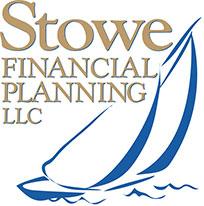
The 60/40 Guys Part 3
How do we manage risk.
In the last segment I defined the main retirement risk as the chance of outliving our money. Managing risk essentially becomes having cash available, now and at every point in time in the future to meet all planned and even unplanned obligations. I would further stipulate that it is bad planning to sell any security at a loss, other than as a tax avoidance strategy, to make ends meet. This is the entire risk problem and solution. We never want to run out of money, we want to have money available to meet every obligation and we never want take a loss in order to get to that money.
My CFP insurance training says there are three ways to handle risk:
- Avoid it.
- Insure it away.
- Learn to live with it (this is where we come in with income and cash flow planning).
AVOIDANCE
We can avoid some spending. We call this spending discretionary, like ice cream or Porsches, as opposed to non-discretionary, like taxes or electrical bills. You can’t avoid all expense, and the discretionary stuff (ice cream) is the part that helps makes life worth living. We can probably all live on less money, but we can never just stop spending. Avoidance is a powerful temporary tool when we go through an event like 2020. Cutting back on travel and entertainment gave every plan a huge boost.
For an investor, avoidance also means diversifying away any chance that a bad investment will take down the plan. We don’t own enough of any one thing that would do lasting damage.
INSURE RISK AWAY
We can also insure the risk away by turning over our wealth for an annuity that will guarantee income until we die. While the guarantee lasts as long as we do, once we pass away the money is gone. This is great if you live to be 100 years old, terrible if the bus hits you tomorrow. Also, guaranteeing the income against inflation is pretty expensive and if you want to leave an inheritance, an annuity won’t work.
LEARN TO LIVE WITH IT
To be an equity investor means to embrace risk. For retirees, the most unnerving part of investing is a stock market crash. It is imperative to build an investment portfolio that anticipates the inevitable stock market correction and can still meet the needs of a long-term retirement plan. What that means is to have pieces of a portfolio that do not react to a correction. Some part of your investment has to be stable to meet spending and reinvestment needs until the market correction ends, as they all do. This will lead to a mix of stock and bonds appropriate to your age and stage of life.
Our most versatile tool for ensuring that we have money available when we need it is the bucket concept. The idea is that the type of investment should match the spending time horizon, short term investments for short term needs longer term investments for later needs. We group investments into three main groups, or buckets, that are defined by when the money will be needed.
The first bucket is short term; spending from this bucket is for the next 1 to 2 years, depending on the investor. Money that you plan to spend in this time frame should be in stable investments to ensure the funds are available when you need them. Bank savings accounts or CDs would fall into this first bucket, as well as money markets and short-term bonds.
The second bucket is intermediate term, 2-5 years, again depending on the investor. Longer-term bonds are usually in this bucket. We want some return, but the stability of the fund outweighs the need for return. Finally, the third bucket is for your long-term needs. Since the need for this group is a long time away, it can be invested in stock and even carry a higher level of risk than the investor might assume. With all of the stuff spent first from stable investments, we won’t touch this group for something like 5 to 8 years. When you put all of these buckets in one portfolio, it makes a very diverse portfolio with returns aimed at all time periods.
The other, more tedious and specific tool is the cash flow schedule. Here we literally map out our expected spending for the next 5 to 10 years. We assign specific spending to each account in the portfolio. Which account gets the assigned spending depends on a number of factors specific to each investor, like tax issues, when Social Security starts, their age and the mix of taxable and retirement accounts among others. Each year for sure, and usually every six months, we measure the actual spending and reforecast from there. Each account will be built around how soon it is needed in the schedule. Cash flow scheduling is used generally at the start of retirement and is particularly useful when we are delaying claiming Social Security benefits.
You see that managing risk in retirement will naturally lead to a diversified portfolio, with a healthy mix of stocks and bonds. The 60/40 portfolio ends up being the poster child for this type of thinking. It is a great place to start investing, but may move over time for each investor as they become comfortable with their planning.

